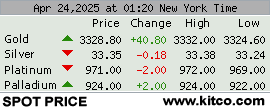MANHATTAN — Despite opening gains and optimism, stocks on the U.S. markets ended the week on a down note, with the Dow Jones Industrial Average losing nearly 1,000 points in the final minutes of trading.
The Dow has now fallen more than 1,800 points since Monday, the worst one-week decline since October 2008, landing Friday afternoon at 19,159 points. The Dow is now down approximately 30% in the last month, losing roughly 10,000 points since Feb. 20.
The S&P 500 suffered a similar fate Friday, closing down 4.3%. Even gains on Nasdaq futures, the brightest spot heading into the morning, did not translate into a boost in stocks during trading hours, with that market losing nearly 4 points by closing bell.
Scrambling to prevent further economic disaster, lawmakers continue to work on a third stimulus, which is expected to dwarf the first two in size and scope.
Most Americans would get direct payments under the Senate’s current Phase III stimulus proposal, worth about $1 trillion, though individuals and families making above a certain amount of income would receive nothing.
The package also includes $300 billion in small business loans, as well as targeted funds for such ailing industries as airlines.
Phase III was drafted by Senate Republicans, and key Democrats have criticized the proposal for being too pro-business and leaving out individual American workers.
During a press briefing Friday, the president said there is “tremendous spirit to get something done” by members of both political parties, and that Democrats and the White House are “not far apart” on the package.
The president also hinted additional stimulus packages will be forthcoming.
“If this doesn’t work, we’re going to keep doing until we get [the economy] going,” Trump said.
The president refused to say whether allowing companies to buy back stocks would be a deal-killer for him on the next phase of the stimulus. “I am fine with restricting buybacks; in fact I would demand that there be no stock buybacks,” Trump said. “I don’t want them taking hundreds of millions of dollars and buying back their stock because that does nothing.”
COVID-19, the new strain of coronavirus responsible for a global pandemic, has now affected more than 266,000 worldwide, with 16,000 confirmed cases throughout the entire United States, according to data compiled by Johns Hopkins University.
Data show more than 11,000 have died globally from the virus, with at least 220 deaths in the United States.
More dire economic news is likely to come as unemployment rises and businesses are losing revenue, with employees locked down in many states.
Governors in New York and California have ordered all nonessential employees to work from home, and a similar order for Illinois is set to take effect Saturday.
The full damage from the crisis likely won’t be known for months, though experts predict unemployment will soon skyrocket.
The U.S. Department of Labor announced earlier this week that it saw 281,000 seasonally adjusted unemployment claims during the week ending March 14, the highest reported since September 2017.
Trump did not address government unemployment estimates for March and April during the press briefing, nor did he comment on a report in The New York Times that Labor Department officials have asked states to stay mum on the number of increasing unemployment claims and instead use “generalities to describe claims levels.”
On Thursday, Bridgewater founder Ray Dalio said the coronavirus could ultimately cost U.S. businesses up to $4 trillion, and $12 trillion globally. “What’s happening has not happened in our lifetime before,” he said.
— By Nick Rummell, CNS
Like this:
Like Loading...
Related





 Tweet This
Tweet This Facebook
Facebook Digg This
Digg This Bookmark
Bookmark Stumble
Stumble RSS
RSS




























REAL NAMES ONLY: All posters must use their real individual or business name. This applies equally to Twitter account holders who use a nickname.
0 Comments
You can be the first one to leave a comment.